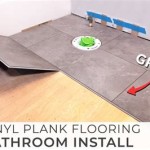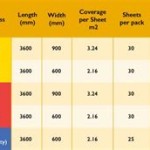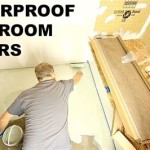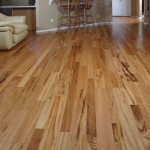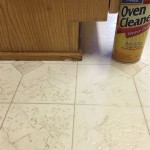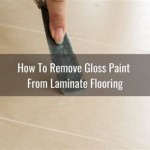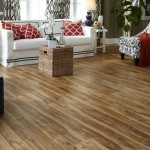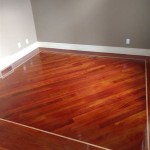How to Remove Tape Residue From Wooden Floors
Tape residue on wooden floors is a common problem faced by homeowners and maintenance personnel alike. It can originate from various sources, including masking tape used during painting, packing tape left after moving, or even adhesive tapes used for securing rugs or furniture. The sticky residue is not only unsightly but also attracts dirt and debris, further compromising the floor's appearance and potentially damaging its finish. Removing this residue requires patience, the right tools, and appropriate techniques to avoid scratching, discoloration, or other forms of damage to the wood.
The effectiveness of any removal method largely depends on the type of tape used, the duration it remained on the floor, the type of finish on the wood, and the environmental conditions. Some adhesives are more aggressive than others, and prolonged exposure to heat or sunlight can make the residue harder and more difficult to remove. Identifying these factors beforehand will help significantly in choosing the correct cleaning procedure.
Before proceeding with any method, it is crucial to test it on an inconspicuous area of the floor. This precautionary measure ensures that the chosen solvent or cleaning agent does not negatively react with the wood or its finish. A small, hidden corner or an area under furniture can serve as a testing ground, giving an indication of potential discoloration, fading, or finish damage. If any adverse reaction is observed, it is essential to discontinue the use of that particular method and seek alternative solutions.
Key Considerations Before Starting
Before attempting any removal methods, several considerations are essential to minimize the risk of damage to the wooden floor. Understanding these factors helps in selecting the safest and most effective approach.
First, identify the type of wood flooring and its finish. Different wood species react differently to cleaning agents, and various finishes, such as polyurethane, varnish, or wax, require specific cleaning protocols. For instance, a solvent that is safe for a polyurethane finish might damage a wax finish. Consulting the manufacturer's guidelines or a flooring professional can provide valuable information about the floor's composition and recommended maintenance procedures.
Secondly, assess the extent and age of the residue. Fresh residue is typically easier to remove than old, hardened residue. The longer the tape has been on the floor, the more deeply the adhesive bonds with the wood. Older residue may require more aggressive methods or multiple treatments to completely eliminate it.
Lastly, gather all necessary tools and materials beforehand. Having everything prepared streamlines the cleaning process and prevents the need to search for items mid-way, potentially delaying the task or causing accidental damage. Essential tools include soft cloths, plastic scrapers, a heat source (such as a hairdryer), and appropriate cleaning solutions. It is also advisable to wear gloves to protect the skin from chemicals and to prevent transferring oils onto the floor.
Effective Removal Methods
Several methods can be employed to remove tape residue from wooden floors, each with its own set of advantages and disadvantages. It's important to choose the method that best suits the situation, taking into account the type of residue, the wood finish, and the potential for damage.
Heat Application: Applying heat is a common and often effective method. A hairdryer set on low heat can soften the adhesive, making it easier to peel or scrape away. The heat should be applied evenly and cautiously, avoiding prolonged exposure to any one spot, which could potentially damage the wood finish. Once the adhesive is softened, gently scrape it away with a plastic scraper or a credit card. After removing the bulk of the residue, wipe the area with a damp cloth to remove any remaining stickiness. If some residue persists, repeat the process until it is completely gone.
Using Solvents: Various solvents can dissolve tape residue. Mineral spirits, also known as white spirit, are a popular choice for removing adhesive residue. It is important to ensure proper ventilation when using mineral spirits, as they can emit fumes. Apply a small amount of mineral spirits to a clean cloth and gently rub the affected area. Avoid pouring the solvent directly onto the floor. Allow the solvent to sit for a few minutes to soften the adhesive, then wipe it away with a clean cloth. Repeat as necessary. Afterwards, clean the area with a damp cloth and then dry it thoroughly.
Another solvent option is rubbing alcohol (isopropyl alcohol). It's generally considered safer than mineral spirits and is less likely to damage wood finishes. Apply rubbing alcohol to a cloth and rub the residue until it dissolves. Like with mineral spirits, avoid direct application to the floor. Wipe the area clean with a damp cloth after removing the residue. Consider testing in an inconspicuous area first.
Oil-Based Solutions: Certain oils can be effective in breaking down adhesive residue. Vegetable oil, olive oil, or even baby oil can be used for this purpose. Apply a small amount of oil to the affected area and let it sit for several minutes. The oil penetrates the adhesive, loosening its grip on the wood surface. After allowing the oil to soak, gently scrub the residue with a soft cloth or a plastic scraper. Once the residue is removed, clean the area thoroughly with dish soap and water to remove any oily residue. Ensure the floor is completely dry to prevent slipping hazards.
Vinegar Solution: A mixture of white vinegar and water can also be used to remove tape residue. Vinegar is a mild acid that can help break down the adhesive. Mix equal parts of white vinegar and water in a spray bottle. Spray the solution onto the residue and let it sit for a few minutes. Then, wipe the area with a clean cloth. For stubborn residue, you may need to repeat the process or use a bit more vinegar in the solution. Always wipe the floor dry after using the vinegar solution to prevent water damage.
Dealing with Stubborn Residue
Sometimes, tape residue is particularly stubborn and resists removal using the methods described above. In such cases, a more aggressive approach may be necessary, but it is crucial to proceed with caution to avoid damaging the wood floor.
Using a Commercial Adhesive Remover: Several commercial adhesive removers are specifically designed to dissolve stubborn adhesive residue. These products typically contain stronger solvents than those commonly found in household cleaners. When using a commercial adhesive remover, carefully read and follow the manufacturer's instructions. Always test the product in an inconspicuous area first to ensure it does not damage the wood finish. Apply the remover sparingly to the affected area, let it sit for the recommended time, and then wipe it away with a clean cloth. Thoroughly clean the area with a damp cloth afterwards to remove any remaining remover residue.
Baking Soda Paste: Baking soda is a mild abrasive that can help remove stubborn residue. Mix baking soda with a small amount of water to create a paste. Apply the paste to the affected area and gently rub it with a soft cloth or a plastic scraper. Avoid using excessive pressure, as this could scratch the wood finish. Once the residue is removed, wipe the area clean with a damp cloth and dry it thoroughly. Baking soda is generally safe for most wood finishes, but it is still advisable to test it in an inconspicuous area first.
Ice Application: For certain types of adhesives, freezing them can make them brittle and easier to remove. Place a bag of ice on the residue for several minutes to harden the adhesive. Once the adhesive is frozen, gently scrape it away with a plastic scraper or a credit card. This method is particularly effective for removing sticky residue that tends to smear instead of dissolving.
Professional Assistance: If all else fails, or if you are concerned about damaging the wood floor, consider seeking professional assistance. A professional floor cleaning or refinishing service has the expertise and equipment to safely remove stubborn residue without causing damage to the floor. They can also provide advice on how to prevent future adhesive residue problems.
Regardless of the method chosen, patience and care are essential. Rushing the process or using excessive force can lead to scratches, discoloration, or other forms of damage. By taking the time to carefully assess the situation and choose the appropriate removal method, it is possible to successfully remove tape residue from wooden floors and restore their beauty.

The Best Way To Remove Tape Residue From Hardwood Flooring Between Naps On Porch

4 Ways To Remove Adhesive From A Hardwood Floor Wikihow

Best Cleaner Ever To Remove Sticky Tape From Floors Etc Safe Easy

Removing Carpet Tape From Hardwood Floors Or Stairs

4 Ways To Remove Adhesive From A Hardwood Floor Wikihow

Easy Way To Remove Tape Residue Goo Gone

Flooring Tips How To Remove Tape From A Hardwood Floor

Easy Ways To Get Rid Of Carpet Tape On Wooden Floors Or Stairs Floor Sanding

How To Remove Tape Residue From My Wood Floor Knowledge Centre

Best Cleaner Ever To Remove Sticky Tape From Floors Etc Safe Easy
See Also
